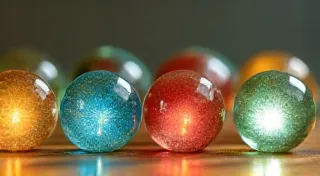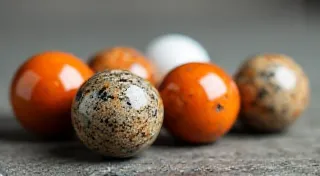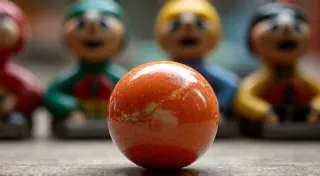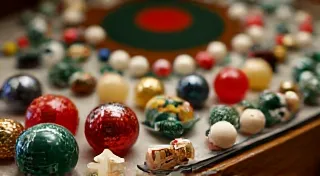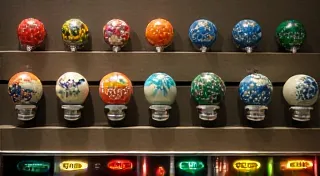The Alchemist's Glass: Unlocking Inspiration From the Imperfections of Antique Toys
There’s a particular weight to holding something old. Not the physical heft, though that’s often present, but a density of history, a whisper of vanished lives. As a writer, I've found myself repeatedly drawn to this sensation, especially when surrounded by antique toys. They aren’t just objects; they’re portals to forgotten moments, vessels carrying echoes of laughter, tears, and the simple, unadulterated joy of childhood. And it’s the imperfections—the chips, the faded colours, the subtle asymmetries—that unlock the deepest wellsprings of inspiration.
My fascination began not with marbles specifically, but with an old accordion my grandfather kept in the attic. It was a battered thing, its bellows cracked, several keys stubbornly silent. He’s long gone, but I remember his stories of playing it at family gatherings, the music filling the room with warmth and joy. He’d say, "It's got character, this one. Each mark tells a story." It wasn't a pristine, showroom-ready instrument. It was *lived in*. And it’s that sense of having weathered storms, of bearing witness to decades of life, that I find so compelling, and what I try to translate into my writing.
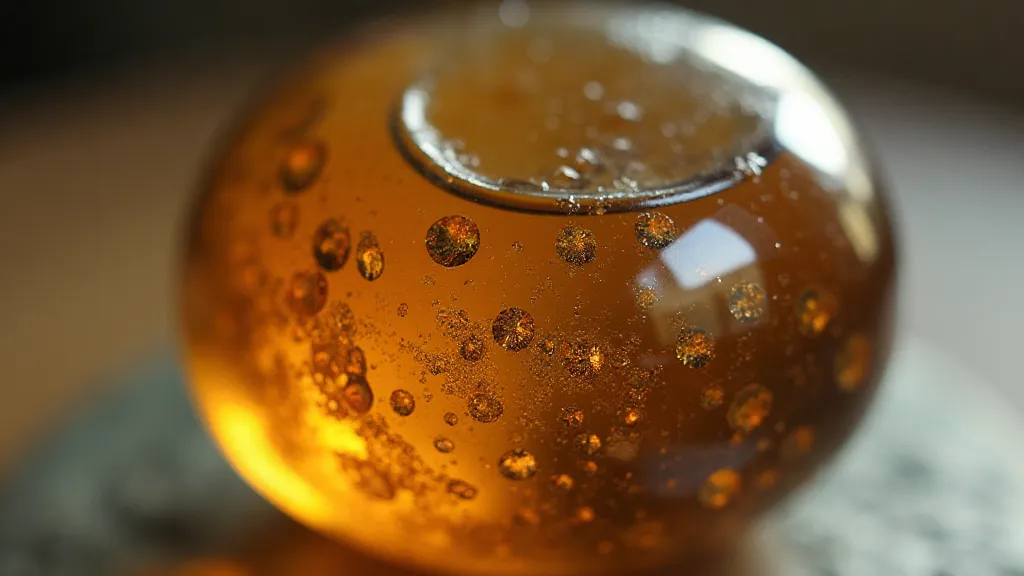
A History Etched in Glass
The history of marbles is surprisingly rich. While playing with stones has been a pastime for millennia – early versions were literally pebbles – the creation of manufactured glass marbles began in mid-19th century Europe and the United States. Initially, they were utilitarian—cheap, readily available entertainment for children of all social classes. The industrial revolution spurred mass production, and with it, an explosion of colours and designs. Early “common” marbles, often referred to as “steelies” due to their metallic sheen, were largely uniform. However, as techniques improved, so did the variety. Swirls, stripes, and elaborate patterns emerged, reflecting the burgeoning industrial aesthetic and the expanding palette of available dyes.
The late 19th and early 20th centuries represent the golden age of marble production. Companies like Christensen Schmidt & Co. in Akron, Ohio, became renowned for their high-quality, handcrafted marbles. These weren’t simply manufactured; they were crafted, each one possessing a unique character. Sadly, the Great Depression brought a sharp decline in production, and while marbles continued to be made, the artistry and variety diminished. Today, these vintage marbles are prized possessions for collectors and a captivating glimpse into a bygone era.
The Beauty of Decay: More Than Meets the Eye
But it's not the flawless examples that truly captivate me. It's the ones with the chips, the scratches, the faded colours. These imperfections aren't flaws; they're narratives. A chip on a marble, for instance, speaks of countless hours spent rolling on the pavement, of games played fiercely, of a child's uninhibited joy. It's a physical manifestation of a life lived – a miniature testament to resilience. The faded colours – the once vibrant blues and reds mellowed by time and exposure – speak of patience, of the beauty found in the passage of years.
Consider a marble that has lost a layer of its paint, revealing a different colour beneath. That’s a metaphor for hidden depths, for the complexities that lie beneath the surface of any individual or situation. It’s a reminder that things aren't always what they seem, and that true beauty often emerges from unexpected places. It’s a prompt to look deeper, to uncover the stories that lie hidden.
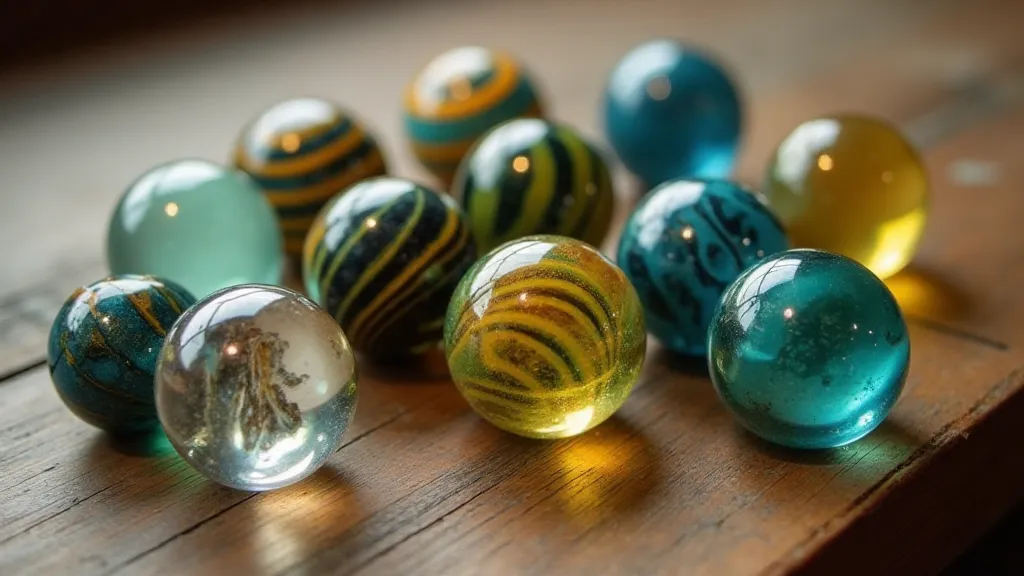
Craftsmanship and the Collector's Eye
Understanding the history of marble production also enhances appreciation. Early marbles were often made using a "slurry” process – a mix of glass powders and dyes poured into molds. This method often resulted in imperfections and inconsistencies, which are now considered charming characteristics. Later techniques, such as the “machine-made” process, produced more uniform marbles, but lacked the unique charm of their handmade predecessors.
For the serious collector, identifying these nuances is key. Knowing the manufacturing techniques helps discern a "steelie" from a "wagon wheel," or a Christensen Schmidt from a later, mass-produced imitation. It's not simply about owning a beautiful object; it’s about understanding its history, its place in time, and the craftsmanship that went into its creation. Restoration is a delicate matter, too. While cleaning may reveal a marble's original vibrancy, aggressive attempts to “repair” damage often detract from its character. The imperfections are part of its story; they shouldn't be erased.
Resilience and Narrative Possibilities
As a writer, I find that these physical imperfections—the chips, the cracks, the faded colours—serve as powerful metaphors for the human condition. A chipped marble can represent a character who has overcome adversity, a story of resilience in the face of loss. The faded colours can symbolize the passage of time, the bittersweet nature of memory, the inevitability of decay. The asymmetry can suggest a non-traditional path, a refusal to conform to expectations.
My grandfather’s accordion, with its cracked bellows and silent keys, was a constant reminder that beauty isn’t about perfection. It’s about character, about history, about the stories etched into the surface of things. It’s about finding the music even when some of the notes are missing. And as I write, I strive to capture that same sense of authenticity, that same appreciation for the imperfections that make life—and antique marbles—so compelling.
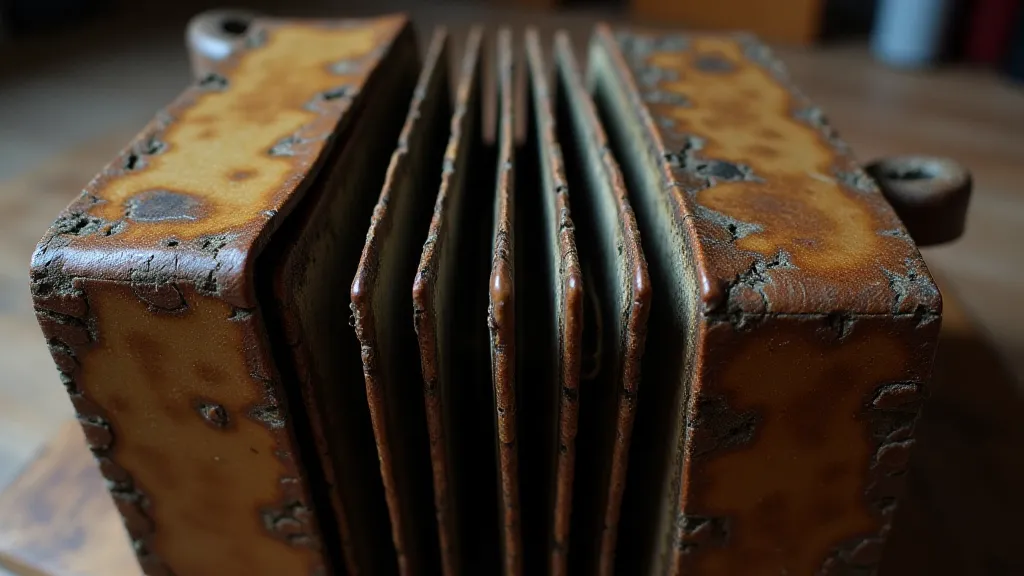
The next time you hold a vintage marble, or any antique toy, take a moment to really *see* it. Don’t just focus on its beauty. Look for the chips, the scratches, the faded colours. Let those imperfections speak to you. They hold stories waiting to be unlocked, narratives yearning to be told. They’re an alchemist’s glass, transforming the ordinary into the extraordinary, the flawed into something truly beautiful.
